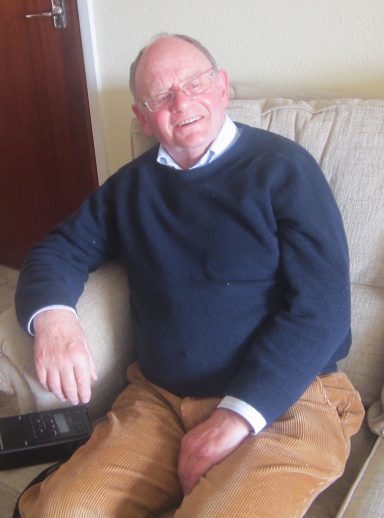Jack Sweet is a local historian in Yeovil and remembers as a 5 yr old boy witnessing a raid by a single German bomber on the Westland factory in March 1941

The event was that this Dornier 17 had come over the town, the warning had gone at eleven o’clock and everyone had gone to their shelters and what have you and the aircraft apparently just stooged around. Now, it was a rule in Westlands that when the sirens went, of course, there were also warnings in the factory itself, people had to go to the shelters in the factory. No one was allowed to leave, allegedly. But, at about twelve o’clock, a whole crowd of people got fed up. I should imagine, well, it was dinner time, nothing’s happened and they began to leave the factory and this is the story that the bomber suddenly dived, seeing these people coming out, and released its bombs. Only two of those bombs hit Westlands and one exploded in the car park and killed a number of people.
The other bombs fell on the houses in Westland Road and several people were killed there. I happened to be in the front room with my father; a shadow came across, and the next thing I could see was this aircraft with the twin fins, which was a Dornier 17, the stick came out and that’s what I can remember. Next thing I can remember seeing a policeman running up Beer Street and what was unusual, he was, in fact, wearing a webbing belt with a holster in it and a pistol.
The case in point which I’m going to relate now concerns a young boy, a five-year-old, called Trevor Hoyle. Trevor was in his first year as a pupil of Huish Infants School which is now where Tesco’s store is in Huish and on the day in question, the air raid sirens went at twelve noon and it was a rule that all children in schools, when the siren went, would go to the school air raid shelter. There they would stay until the all-clear. They were not allowed to leave unless a parent called to take their child home because this would sometimes happen that the mother would want the youngster to be with her rather than at the school.
On this day, a lady turned up at Huish Infants School to collect her daughter and told the teacher in charge of the air raid shelter that she’d also been asked by a Mrs Hoyle to bring home her son, Trevor. The teacher obviously took the lady’s word that she’d been given this permission and young Trevor and the little girl in the class left with the mother. Trevor was seen running along Huish, towards Orchard Street, on his own. He was then seen in Westland Road, on his own, by an air raid warden who was on duty in the road, at his position to which he was sent when a raid was on. Trevor was seen by another warden, going down the road to his house. Now, his house was in a cul-de-sac immediately to the east of the airfield, the last of the houses in Westland Road, up against the airfield boundary.
Shortly after Trevor was seen, the German aircraft, the Dornier 17, attacked the works, dropped its bombs and one of the bombs scored a direct hit on the house where Trevor and his mother lived. The house was completely destroyed, the mother was killed and so was Trevor but, although Mrs Hoyle’s very, very badly mutilated body was discovered, there was no sign of Trevor. He’d completely disappeared. Well, of course, there was an enquiry into this at the school. One, why was he allowed to go and secondly, where was he?
The outcome was that Trevor was probably completely obliterated by the explosion. It seems that one or two bits of his clothing were found later and identified by Mr Hoyle who was not working in Yeovil. Well, he was working in Yeovil but he’d been, I think, at Westlands, but he was working at the time of course and the first he knew about it was when he was called home to find out that his house had been completely obliterated and his wife and child were dead. Sad story, but that caused a bit of a cause celebre, shall we say, at the time because people were very concerned. A lot of people had been concerned that there was no sign of Trevor until, of course, some days later when bits of his clothing were identified. His mother was buried in Yeovil cemetery and that was one of the tragedies of the March raid (1941) which has always left a lasting impression on me.








No Comments
Add a comment about this page